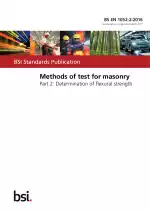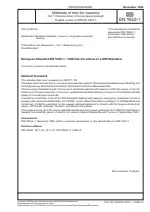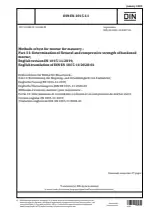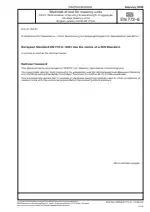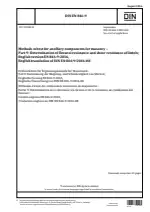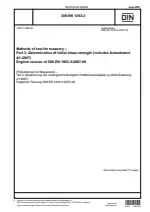Methods of Test for Masonry - Part 2: Determination of Flexural Strength
Also Known As:
The DIN EN 1052-2 standard is a method of test for masonry, specifically focusing on the determination of flexural strength. This standard provides guidelines on how to determine the flexural strength of small masonry specimens for both the principal axes of loading. The standard covers various aspects of the testing process, including specimen preparation, conditioning, testing machine requirements, testing method, calculation method, and documentation requirements for the test report.
The standard emphasizes the need for proper preparation of the specimens, ensuring that they meet the specified size and shape requirements. It also highlights the importance of conditioning the specimens before testing to ensure they are in a suitable state for accurate measurements.
The testing machine used for this method should comply with specific requirements stated in the standard to ensure reliable and consistent results. The method of test described in the standard provides detailed instructions on how to apply the load to the specimen and measure the resulting deflection.
Furthermore, the standard includes guidelines on how to calculate the flexural strength based on the measurements obtained during the test. It also outlines the information that should be included in the test report, ensuring proper documentation of the testing procedures and results.
| Descriptors | Bend testing, Bending tensile strength, Bricks, Components, Construction, Construction materials, Definitions, Dimensions, Flexural tensile stress, Loading, Masonry, Masonry walls, Material testing machines, Mathematical calculations, Mortars, Preparation, Production, Storage, Strength of materials, Symbols, Tensile strength, Test pieces, Test reports, Testing, Walls, Bearings, Stress |
| ICS Codes | 91.080.30 - Masonry |
| Language(s) | English |
| File Size | 983.0 KB |


